Based on network pharmacology and molecular docking technology to explore the mechanism of Panax notoginseng in the treatment of membranous nephropathy
LI Ying, MAO Yan-ping, WANG Yi-ping, ZHANG Lei
1.The First Clinical Medical College of Anhui University of Traditional Chinese Medicine, Hefei 230031, China
2.The First Affiliated Hospital of Anhui University of Traditional Chinese Medicine, Hefei 230031, China
Keywords:
ABSTRACT Objective: Based on network pharmacology and molecular docking technology to explore the mechanism of Professor Cao Enze 's application of Panax notoginseng in the treatment of membranous nephropathy.Methods: TCMSP database was used to obtain the effective components and corresponding target information of Panax notoginseng, and Gene Cards database was used to obtain the disease target genes of membranous nephropathy.The intersection targets of the two were taken and the Venn diagram was drawn.The STRING database was used to obtain the protein interaction relationship, and the PPI network diagram was constructed by Cytoscape 3.9.1 software to screen out the core targets of Panax notoginseng in the treatment of membranous nephropathy.GO function and KEGG pathway enrichment analysis were performed using the David database to obtain the potential pathway of Panax notoginseng in the treatment of membranous nephropathy.Finally, Autodock software was used to verify the molecular docking of the main active components of the drug with the core targets.Results: A total of 7 effective components such as quercetin, ginsenoside rh2,Mandenol and Stigmasterol were retrieved, and 127 potential targets of Panax notoginseng in the treatment of membranous nephropathy were screened out.By PPI network topology analysis,23 core targets such as JUN, TP53, RELA, AKT1 and MAPK1 were screened out.GO functional enrichment analysis contained 703 biological processes,55 cell components and 121 molecular functions, and KEGG signal pathway enrichment analysis enriched 171 signal pathways.The results of molecular docking showed that there was a strong binding ability between the main core targets and the main components of Panax notoginseng.Conclusion:Through network pharmacology, it is concluded that Panax notoginseng treats membranous nephropathy through multiple targets and multiple pathways, which provides a theoretical basis for subsequent basic research.
1.Introduction
Membranous nephropathy (MN) is the most common nephrotic syndrome in adults.About 80% of patients with unknown etiology are called idiopathic membranous nephropathy (IMN) or primary membranous nephropathy (PMN).The rest of the patients are related to drugs (such as non-steroidal anti-inflammatory drugs) or other diseases (such as systemic lupus erythematosus, hepatitis B or malignant tumors)[1], known as secondary membranous nephropathy(SMN).Western medicine believes that MN is an autoimmune disease, and its main pathological feature is the deposition of subepithelial immune complexes, resulting in thickening of the glomerular capillary wall and the formation of spikes.The deposition of immune complex IgG and the resulting activation of the complement system and the production of membrane attack complex C5b-9 eventually cause damage to the podocytes,leading to glomerular filtration membrane damage and proteinuria formation[2], which is an important pathogenesis of MN.The main clinical features of MN are different degrees of proteinuria, of which about 60% of patients show nephrotic syndrome.The prognosis of patients varies greatly.About 1/3 of patients experience spontaneous remission, 1/3 of patients maintain different levels of proteinuria,and the remaining 1/3 progress to advanced renal failure[3].In most cases, MN patients have a long course of disease and are relatively difficult to cure.The clinical manifestations of patients without remission are persistent nephrotic syndrome.If not treated in time, it can cause complications such as thromboembolism, cardiovascular event risk, renal failure, etc., which seriously affect the quality of life and prognosis of patients[3].In the end, about 30%~40% of patients will have renal failure within 5~15 years and need dialysis or kidney transplantation.
Panax notoginseng, has the effect of removing blood stasis and hemostasis, relieving swelling and pain, tonifying blood and replenishing healthy qi[4].Modern pharmacological studies have found that Panax notoginseng has a variety of chemical constituents,with hemostatic, antithrombotic, hypoglycemic, anti-inflammatory,anti-oxidation, immune regulation and other pharmacological effects[5], has a wide range of clinical applications.Professor Cao Enze is a national level famous traditional Chinese medicine doctor.He has been engaged in the treatment of various kidney diseases with integrated traditional Chinese and Western medicine for more than 55 years.He has rich experience.He is good at using Panax notoginseng to treat membranous nephropathy.The drug is used to swallow, commonly dosage is 3~4 g, the curative effect is remarkable.In this study, network pharmacology was used to explore the potential targets and mechanism of Panax notoginseng in the treatment of membranous nephropathy, and molecular docking technology was used for preliminary verification to provide theoretical reference for subsequent research.
2.Method
2.1 Screening of effective active components and related targets of drugs
By using TCMSP database[6], with ‘Panax notoginseng’ as the key word and pharmacokinetics as the principle, oral bioavailability(OB) 30 % and drug like (DL) 0.18 were set as the conditions for preliminary screening to obtain the effective active components of Panax notoginseng and their corresponding target proteins,and download the mol2 structure file ( this is the small molecule ligand used for subsequent molecular docking ).The target protein was transformed into a standardized gene name using the UniProt database[7].
2.2 Screening of membranous nephropathy genes
In the GeneCards database[8], ‘membranous nephropathy’ was used as the key word to obtain the currently known disease targets related to MN.Using the Venny2.1 platform, the potential targets of Panax notoginseng in the treatment of MN were obtained, that is, the intersection targets of the two were obtained.
2.3 Screening of core targets and construction of PPI network
Imported the intersection targets of Panax notoginseng and MN into the STRING database[9], selected species as ‘Homo sapiens’, and the confidence level of the target association was set to the highest confidence (0.900).The rest of the settings were default, excluding targets that did not participate in protein interaction, obtaining PPI network relationships, and importing them into Cytoscape3.9.1 software, using the plug-in Centiscpae2.2 for network topology analysis.Taking Degree, Closeness Centrality and Betweenness Centrality as parameters, and greater than their respective thresholds as screening conditions, the intersection of the three is taken to obtain the core target, and the PPI network diagram is constructed.
2.4 Enrichment analysis of GO function and KEGG pathway
Open the David database[10], selected species as human, and the threshold was set according to ‘P < 0.01 ’.GO function analysis and KEGG signaling pathway enrichment analysis were performed on the targets involved in protein interaction.The data information after analysis was sorted according to the size of P value, and the top 20 KEGG signaling pathways were screened out and imported into the bioinformatics website to draw the KEGG enrichment bubble map.The top 10 of biological process (BP), cellular component (CC) and molecular function (MF) in GO analysis were selected to draw a three-in-one histogram of GO function.
2.5 Molecular docking
Through molecular docking to verify the main active components and main core targets of Panax notoginseng.The pdb structure file of the target protein (receptor protein) was downloaded from the pdb database[11], then using PyMol software to remove water and ligands.After processing, AutoDock software was used for hydrogenation,charge calculation, etc., and the output was a pdbqt format file; the small molecule ligand (mol2 structure file) is also output as a pdbqt format file after processing by AutoDock software.The molecular docking operation of the receptor protein and the ligand was performed and the binding energy of the two was obtained, and then the PyMol software was used for visualization.
3.Results
3.1 Effective active ingredients of Panax notoginseng
The TCMSP database was used to search Panax notoginseng, and 119 active ingredients were obtained.Only 8 active ingredients met the pharmacokinetic characteristics, of which 7 active ingredients had corresponding targets (Table 1), and 1 active ingredient had no related protein and was deleted.The target proteins corresponding to these 7 active ingredients were retrieved, and 253 predicted targets were obtained.After the Uniprot database standardized the gene name and deduplicated, obtained 184 drug targets.

Tab1 Component information of Panax notoginseng
3.2 Potential targets of Panax notoginseng in the treatment of MN
In the Gene cards database, a total of 3670 targets related to membranous nephropathy were retrieved with ‘membranous nephropathy’ as the key word, by intersecting them with the active components of Panax notoginseng, 127 common targets were obtained, and the Venn diagram was drawn (Figure 1).
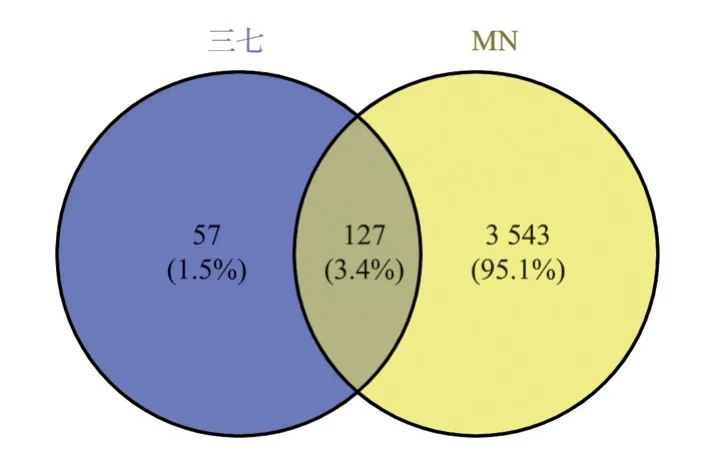
Fig 1 Intersection target of Panax notoginseng and membranous nephropathy
3.3 Core targets and PPI network
The PPI network relationship obtained through the String database was imported into Cytoscape 3.9.1 software.After Analyze Network analysis and visual processing, Figure 2 is obtained.The larger the bubble in the figure, the thicker the related connection and the more nodes indicate that it is also more important in the PPI network.After screening, 23 core targets such as transcription factor Jun (JUN), tumor suppressor gene p53 (TP53), mitogen-activated protein kinase 1 (MAPK1), RAC-α serine / threonine protein kinase(AKT1), and transcription factor p65 (RELA) were obtained.The related topological parameters are shown in Table 2.
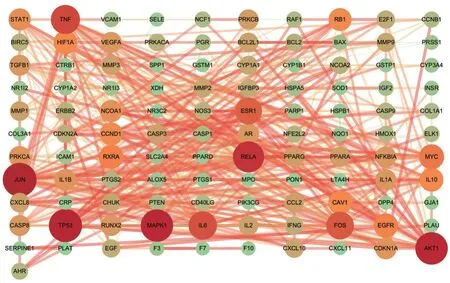
Fig 2 PPI network diagram of intersection target of Panax notoginseng in the treatment of membranous nephropathy
3.4 Results of enrichment analysis
A total of 804 items were obtained by GO analysis, including 703 BP-related items, which were mainly reflected in the positive regulation of transcription from RNA polymerase II promoter,positive regulation of transcription and DNA template, positive regulation of gene expression and cell apoptosis process and positive and negative regulation.There were 55 items related to CC,including cytoplasm, nucleus, nucleoplasm, extracellular space and other parts ; there were 121 MF-related items, mainly involving protein binding, identical protein binding, enzyme binding, etc.According to the size of the P value, the top 10 were screened out respectively, and the following analysis diagram (Figure 3) was obtained after visual processing using the bioinformatics website.
A total of 171 pathways and their related information were obtained by KEGG analysis.Among them, cancer pathway, lipid and atherosclerosis, chemical carcinogenesis-receptor activation,human cytomegalovirus infection, AGE-RAGE signaling pathway in diabetic complications, hepatitis B, fluid shear stress and atherosclerosis, IL-17 signaling pathway and TNF signaling pathway were strongly correlated with membranous nephropathy, which maybe used as important pathways for the treatment of membranous nephropathy by Panax notoginseng.According to the P value and enriched genes, the first 20 significant pathways were screened out, and the bubble diagram was drawn by using the bioinformatics website as follows (Figure 4).
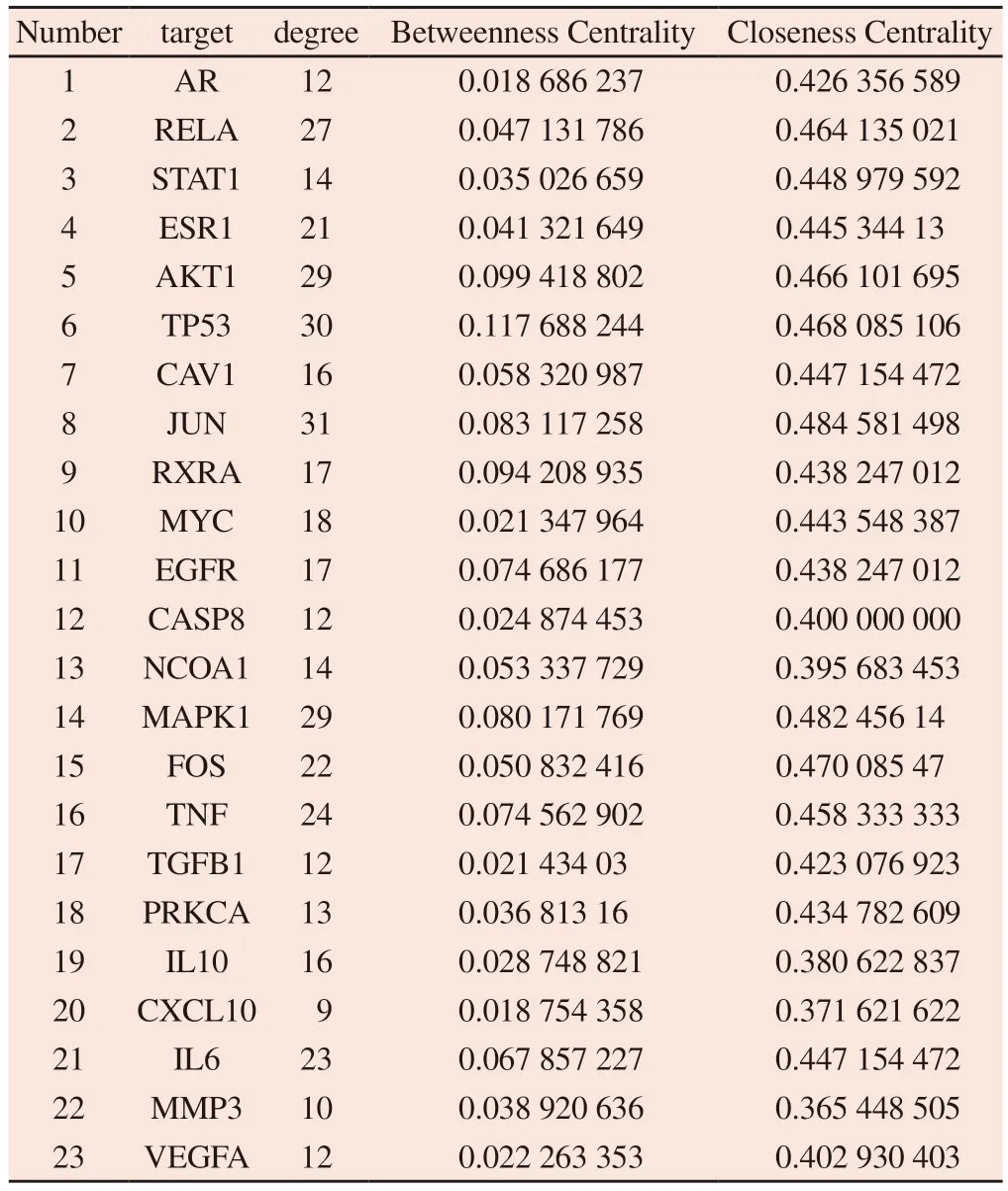
Tab 2 Related information of core targets
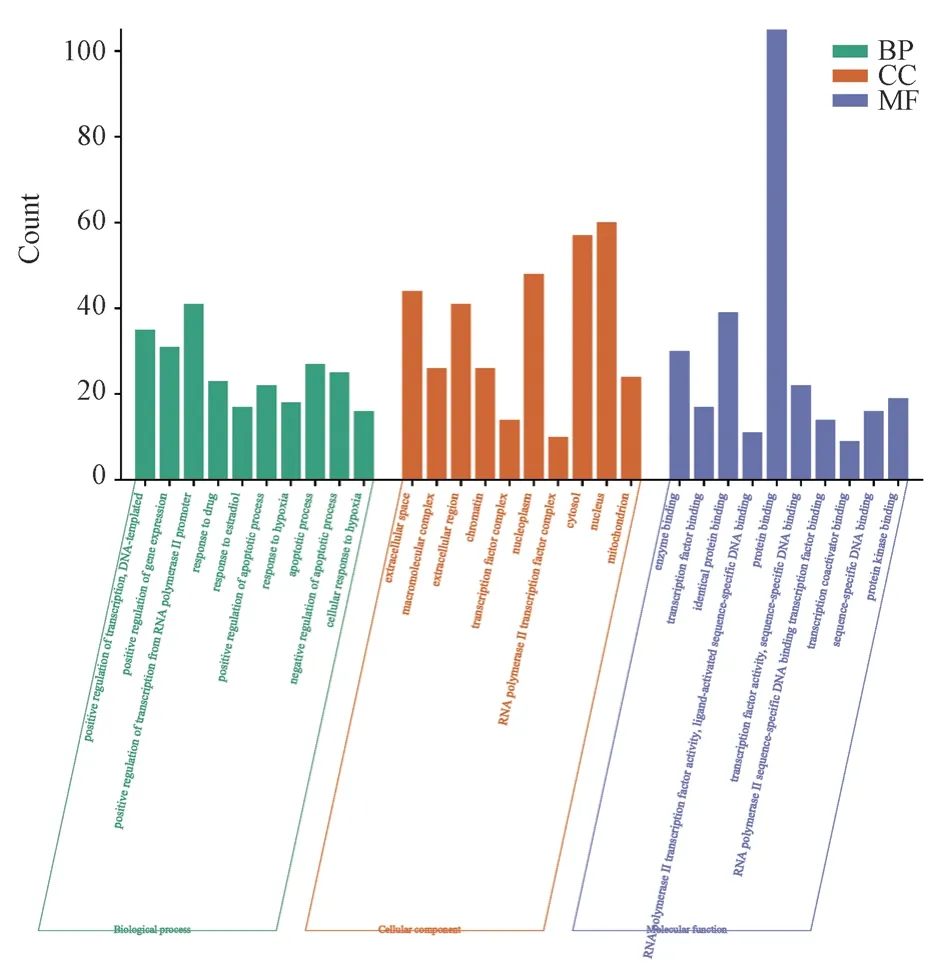
Fig 3 GO functional enrichment entry histogram
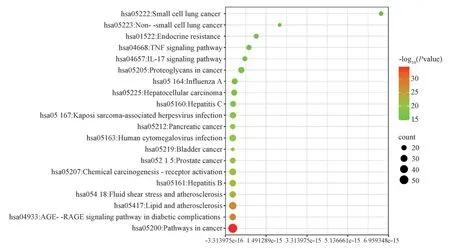
Fig 4 KEGG enrichment analysis bubble diagram
3.5 ‘Active ingredient-target-pathway’ network
The ‘active ingredient-target-pathway’ network diagram was constructed by using cytoscape 3.9.1 software (Figure 5).It can be seen from the network diagram that Panax notoginseng has a variety of effective active ingredients, each active ingredient corresponds to multiple target proteins, and each target can connect multiple components and participate in multiple signaling pathways,reflecting the multiple active ingredients contained in Panax notoginseng treat membranous nephropathy through multi-target and multi-channel intervention.The larger the node area and the more connections in the figure, indicating that the greater the impact on membranous nephropathy.
3.6 Molecular docking verification results
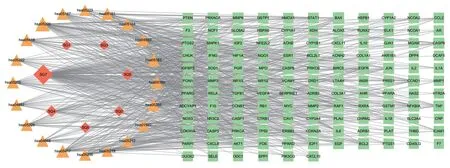
Fig 5 ‘Panax notoginseng active ingredient-target-pathway ’ diagram (Note : The triangle represents the signal pathway, the diamond represents the effective active ingredient of the drug, and the rectangle represents the potential target.)
According to the ‘active ingredient-target-pathway’ network diagram and PPI network diagram, five most important active ingredients were selected for molecular docking with the top five core targets and the binding energy was calculated.The specific results show that the binding energy is less than -1.2 kcal/moL (1kcal= 4.184 kJ), indicating that the docking results are good (Table 3).The lower the binding energy is, the more stable the binding is.The visualization results of partial molecular docking with higher binding energy is shown in Figure 6.

Fig 6 Visual display of molecular docking
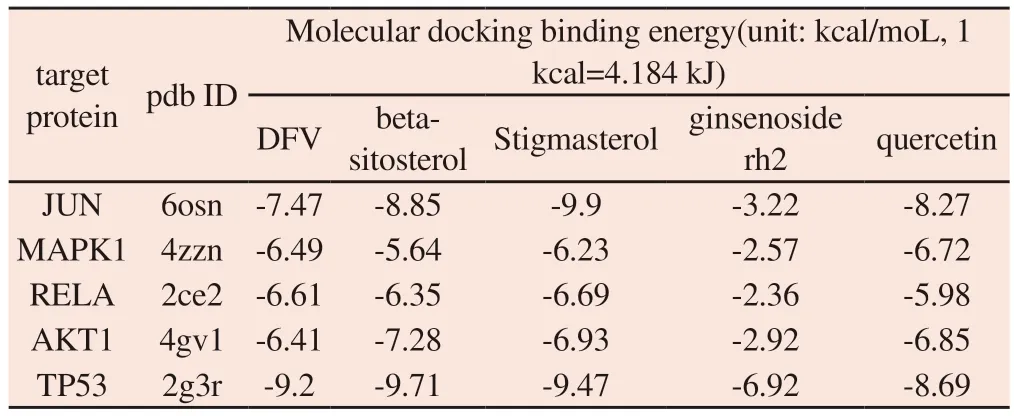
Tab 3 Molecular docking binding energy
4.Discussion
In recent years, the incidence of MN has shown a significant upward trend, and has a tendency to exceed IgA nephropathy, and the age of onset has gradually become younger[12].Kidney Disease:Improving Global Outcomes (KDIGO) proposes that all patients with primary membranous nephropathy and proteinuria should receive optimal supportive care, and immunosuppressive therapy should be given to patients at risk of progressive kidney injury[13].The three most commonly used immunosuppressive treatment regimens are glucocorticoid combined with cyclophosphamide, rituximab or calcineurin inhibitors[1], however, each has the disadvantages of large adverse reactions, easy recurrence after drug withdrawal,and high price, etc.resulting in certain limitations in treatment.A number of studies and the experience of famous traditional Chinese medicine doctor have confirmed that Chinese medicine has a unique understanding of the etiology and pathogenesis of this disease and irreplaceable treatment advantages.The combination of traditional Chinese and Western medicine has higher efficacy and safety in the treatment of this disease.
Membranous nephropathy as a pathological diagnosis noun, there is no specific record of this disease in traditional Chinese medicine.Because the clinical manifestations of patients are edema and foamy urine, it can be classified as ‘ edema ‘, ‘ turbid urine ‘, ‘ consumptive disease ‘ and other categories in traditional Chinese medicine.As early as in the ‘ The Yellow Emperor’s Canon of Medicine ‘, it has been recognized that its pathogenesis is related to lung, spleen and kidney[14].For example, ‘ Suwen Zhizhen Yaodalun ‘ points out: “All the syndromes of water-dampness stagnation, edema and fullness caused by dampness are related to the spleen”.Another example is ‘Plain Questions Water-heat Acupoint Theory ‘: “ The kidney is the gateway to the stomach, like a flood discharge switch.If the switch is broken, the water will not discharge out, it will remain in the human body, and the skin will be edema.“; “...Therefore, the root of edema is in the kidney, and the end is in the lung.Both lung and kidney can accumulate water and cause disease “.’Jing Yue Quan Shu ‘ also has related discussions.Deficiency of lung, spleen and kidney three internal organs, functional damage, weak absorption, subtle material leakage, that is, as Chao Yuanfang ‘s ‘various disease origin and symptom theory’ said: “ fatigue kidney deficiency, can not be hidden in the essence, so because of the urine and subtle out “, resulting in proteinuria.When the protein leakage is too much, and the spleen deficiency can not transport water and grain, resulting in insufficient source of fine substances, it has been lost for a long time, forming consumptive labor.Professor Cao Enze believes that proteinuria,hypoalbuminemia and hyperlipidemia are common in MN patients,which leads to blood concentration and hypercoagulability, it belongs to the category of ‘ blood stasis syndrome ‘ in traditional Chinese medicine, such as ‘ Synopsis of the Golden Chamber · Water-qi disease and pulse syndrome and treatment ‘points out: “.......Poor blood flow leads to stasis, which promotes poor operation of body fluid and leads to edema”.“ Blood syndrome theory “ also said : “Edema can lead to blood stasis, blood stasis can also lead to edema,which is common in clinical practice.Blood stasis can also be a pathological product after the formation of edema, and edema often has blood stasis”.Therefore, blood stasis is not only the pathological product of the disease, but also a new pathogenic factor, which runs through the course of the disease.Professor Cao Enze often uses traditional Chinese medicine for promoting blood circulation and removing blood stasis in the treatment of MN, and creates ‘promoting blood circulation and dredging collaterals ‘ as a common method for the differentiation and treatment of nephropathy[15].Professor Cao Enze is good at using Panax notoginseng to reduce swelling, promote blood circulation and tonify, improve renal microcirculation, adjust body function, and benefit the improvement of membranous nephropathy.
In this study, the effective components of Panax notoginseng were comprehensively analyzed by constructing a ‘ compound-diseasetarget ‘ regulatory network system and the interaction between compounds and targets was systematically analyzed.The key compounds are quercetin, ginsenoside Rh2, amygdalin, stigmasterol and so on.Quercetin is widely used in various diseases due to its wide range of pharmacological effects, including anti-tumor, antiinflammatory, anti-organ fibrosis, anti-oxidative stress and other effects.Animal experiments and in vitro cell experiments have shown that quercetin can inhibit M5 macrophage polarization through NFκB and IRF1 signals, thereby improving renal injury, and can also inhibit M2 macrophage polarization, so it can be used to prevent and treat renal injury and fibrosis[16].Stigmasterol can effectively inhibit the levels of inflammatory factors IL-1β and TNF-α in the inflammatory model, and increase the level of anti-inflammatory factor IL-10 has a good anti-inflammatory effect.In addition, it also has various biological activities such as antiviral and anti-tumor[17],which overlaps with multiple pathways and core targets obtained by KEGG enrichment analysis.In addition to being widely used in the treatment of various cancers by inducing apoptosis and autophagy,ginsenoside Rh2 also has many pharmacological effects such as antiinflammatory, anti-allergic, enhancing immunity, and anti-hypoxia[18].Therefore, it can also be used clinically to prevent and treat renal fibrosis and improve the prognosis of MN.
Through PPI network analysis, it was found that JUN, TP53,RELA, AKT1, MAPK1, etc.may play a key role in the treatment of membranous nephropathy by Panax notoginseng.Jun transcription factor family is a member of activating protein-1 (AP-1).It involves a wide range of biological activities, such as cell differentiation,survival, apoptosis, proliferation, cell transformation and migration.It is the main target of various diseases including cancer and inflammation[19,20].In MN, it mainly protects the kidney by participating in IL-17 and TNF pathways and further activating NFκB and MAPK pathways to fight immune inflammatory response and inhibit the apoptosis of renal tubular epithelial cells.TP53 gene is a tumor suppressor gene encoding tumor protein p53.Its activation plays a vital role in the control of apoptosis pathway[21].It is involved in 15 signaling pathways in the first 20 pathways of KEGG,and is also particularly important in MN.The AKT family plays a key role in regulating growth, proliferation, survival, metabolism and other cellular activities[22].AKT1 is the main subtype of the three subtypes of mammals, and it has been confirmed that its activation plays a key role in renal tubulointerstitial fibrosis and renal tubular dedifferentiation in the progression of acute kidney injury (AKI)to chronic kidney disease (CKD)[23].In addition, animal studies have confirmed that enhanced mitochondrial function can prevent renal ischemia-reperfusion injury.The activation of AKT1 in renal tubular mitochondria has a protective effect on AKI and subsequent CKD development[24].In addition, experiments have confirmed that targeted regulation of MAPK1 expression can inhibit tumor cell proliferation, promote apoptosis and block cell cycle, inhibit tumor cell migration and invasion[25], and can also regulate inflammation and apoptosis synthesis of mediators[26].RELA is a key effector in the NF-κB signaling pathway.It also participates in 15 signaling pathways in the first 20 pathways and plays an important role in regulating renal inflammation[27].
Cancer has become one of the most common diseases in China.In the prediction of the possible mechanism of action of Panax notoginseng in the treatment of MN, the cancer pathway involves 54 targets, mainly related to apoptosis and autophagy.By regulating some key apoptotic signaling pathways and targets, such as TNFrelated ligands and their receptors, NF-κB pathway, TP53,etc., will improve the long-term prognosis of the kidney[28].The combination of advanced glycation end products (AGEs) and AGE receptor RAGE in renal tissue induces various pathological changes, including oxidative stress, apoptosis and inflammation(involving the activation of signaling pathways NF-κB, PI3K/Akt and MAPK/ERK), leading to progressive kidney disease[29].Even without diabetes, in MN patients, the production of AGEs is increased due to oxidative stress and impaired clearance, which leads to vascular injury and aggravates the disease[30].Intervention of this pathway can effectively delay the progression of chronic kidney disease in patients.IL-17 is an inflammatory cytokine secreted by CD4+T cells, which is closely related to a variety of inflammatory diseases in the body.When cells expressing IL-17 are stimulated by external stimuli, IL-17 can stimulate cells to produce TNF-α and IL-6, further activating the NF-κB signaling pathway[31].NF-κB regulates the expression of multiple genes, which play a key role in the inflammatory response during kidney injury[32]; in the TNF pathway, TNF-α can induce the activation of many genes, involving the NF-κB pathway and the MAPK pathway.Both of them play a vital role in regulating the autoimmune and inflammatory functions of T cells, and have the risk of activating inflammation and renal fibrosis[33,34].
The results of molecular docking showed that the binding energy required for the docking of the main active components of Panax notoginseng, such as liquiritigenin, quercetin, amygdalin,stigmasterol and ginsenoside rh2, with the core target was less than-1.2 kcal / moL, which had good binding activity, indicating that the above components may play a key role in the treatment of MN.
In summary, this study found that Panax notoginseng plays a role in the treatment of MN through multiple pathways and multiple targets.The expression of proteins and downstream proteins in the cancer pathway, AGE-RAGE signaling pathway, IL-17 pathway and TNF pathway are often the initiators of other pathways or key factors in other pathways, so special attention should be paid to them.This study reveals the possible mechanism of Panax notoginseng in the treatment of MN through multiple pathways and multiple targets, and has been preliminarily verified by molecular docking technology, but it still needs to be further verified by in vivo and in vitro experiments.
The author ‘s contribution shows:
Li Ying: collect, count and process data, make charts and write papers; mao Yanping: Thesis review guidance and modification;wang Yiping: provide design ideas; zhang Lei: Method guidance.
All authors declare that there is no conflict of interest.
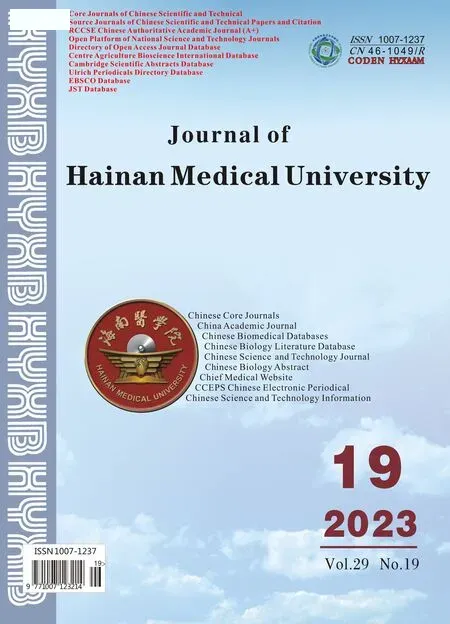 Journal of Hainan Medical College2023年19期
Journal of Hainan Medical College2023年19期
- Journal of Hainan Medical College的其它文章
- Clinical efficacy of bushen huatan huoxue recipe in combination with acupuncture in treating patients suffering from polycystic ovary syndrome with insulin resistance
- MiR-15a-5p in neutrophil exosomes promotes macrophage apoptosis through targeted inhibition of BCL2L2
- A review of the epidemic and clinical study on scrub typhus in China(2010-2020)
- Meta-analysis of the efficacy of volar plate internal fixation versus closed reduction and external fixation in the treatment of adult distal radius fractures
- Expression and correlation of pyroptosis-related markers and PI3K/AKT pathway in endometriosis
- m6A modification promotes the proliferation and migration of cervical cancer and regulates the expression of PD-L1
